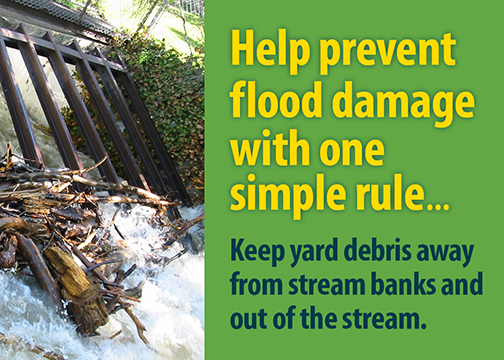Clear debris before stream levels rise to help prevent flooding and property damage for you and your downstream neighbors.
Be sure roadway gutters and storm drains closest to your home are clear of any debris. Flood risks increase when drains are clogged with snow or debris.
If you live along a stream, please keep all yard debris away from the stream banks and out of the stream. Debris can easily get swept away when stream levels rise. Once branches, grass clippings, leaf piles, firewood, lumber, and other debris get into the stream, they can block culvert openings, snag on bridge crossings, or quickly clog in-stream trash grates. This can cause flooding, property damage, and severe bank erosion.

Keep yard debris away from stream banks and out of the stream
Follow this advice and you can help:
- Prevent flood losses
- Prevent property damage
- Reduce stream bank erosion
- Protect stream health & water quality












